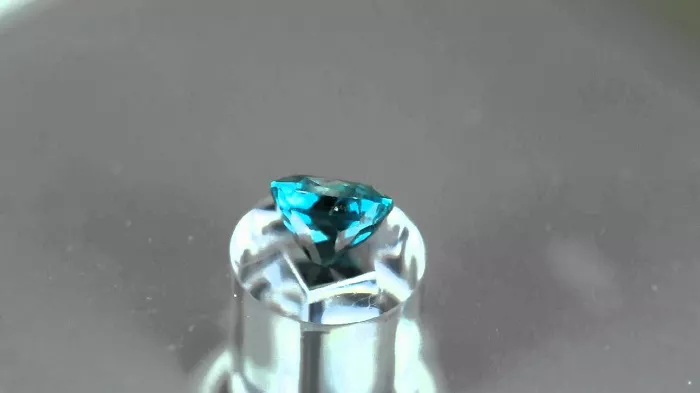In the world of gemstones, few capture the imagination and enchantment of enthusiasts quite like tourmaline. Among its various mesmerizing hues, lagoon tourmaline stands out as a captivating embodiment of nature’s artistry. From its ethereal blue-green tones reminiscent of tranquil tropical waters to its inherent rarity and geological significance, lagoon tourmaline is a gemstone that commands attention and admiration.
Formation and Origins
Understanding the allure of lagoon tourmaline begins with unraveling its geological origins. This gemstone is a member of the tourmaline mineral group, renowned for its diverse range of colors spanning the spectrum. Tourmaline owes its formation to a complex interplay of geological processes, typically occurring in pegmatites – coarse-grained igneous rocks formed from the crystallization of magma deep within the Earth’s crust.
What sets lagoon tourmaline apart is its unique chemical composition, characterized by the presence of elements such as iron, manganese, and lithium, which imbue it with its distinctive blue-green hues. The formation of these captivating colors is a testament to the intricate dance of mineral interactions and environmental conditions that occur over millions of years.
Exploring Lagoon Tourmaline Deposits
Lagoon tourmaline deposits are scattered across select locations around the globe, each with its own geological story and unique gemstone characteristics. Among the most renowned sources of lagoon tourmaline are the mines of Brazil, Mozambique, and Afghanistan, where these precious gemstones are unearthed from the depths of the Earth.
In Brazil, the Minas Gerais region is celebrated for producing lagoon tourmaline of exceptional quality, known for its vivid colors and remarkable clarity. The intricate geological formations of the region give rise to pockets of gem-rich pegmatites, where miners meticulously extract lagoon tourmaline, often in tandem with other gemstone varieties such as quartz and topaz.
Similarly, the gemstone mines of Mozambique have garnered attention for their production of lagoon tourmaline with rich, saturated hues that rival the brilliance of tropical lagoons. Nestled within the rugged landscapes of the East African country, these mines yield a bounty of tourmaline treasures, captivating collectors and connoisseurs alike with their natural beauty.
The Spectrum of Lagoon Tourmaline Colors
One of the most enchanting aspects of lagoon tourmaline is its diverse color spectrum, which ranges from delicate aquamarine blues to lush emerald greens, evoking the serenity and splendor of tropical lagoons. This remarkable variation in color is attributed to subtle differences in chemical composition and trace elements present during the gemstone’s formation.
Some lagoon tourmaline specimens exhibit a captivating bi-color or tri-color zoning, where distinct bands of color intersect, creating mesmerizing patterns reminiscent of watercolor paintings. These natural works of art add an extra dimension of allure to lagoon tourmaline jewelry, showcasing nature’s creativity in its purest form.
The Art of Lagoon Tourmaline Jewelry
In the hands of skilled artisans, lagoon tourmaline transforms from raw gemstone into exquisite pieces of jewelry that adorn and elevate the wearer. Whether set in sleek, modern designs or intricate vintage-inspired settings, lagoon tourmaline captivates with its vibrant colors and innate elegance.
From dainty earrings and pendants to statement rings and bracelets, lagoon tourmaline jewelry offers a myriad of options for those seeking to add a touch of sophistication to their ensemble. Each piece tells a story of natural beauty and timeless allure, making it a cherished addition to any jewelry collection.
Ethical Considerations in Lagoon Tourmaline Mining
While the allure of lagoon tourmaline is undeniable, it is essential to consider the ethical and environmental implications of its extraction and trade. As with any natural resource, responsible mining practices are paramount to ensuring the sustainability and integrity of the gemstone industry.
Efforts to promote ethical sourcing and fair labor practices in tourmaline mining are underway, with initiatives aimed at empowering local communities and minimizing the environmental footprint of mining operations. By supporting reputable suppliers and brands committed to ethical sourcing, consumers can play a vital role in fostering positive change within the gemstone industry.
Market Value and Trends
In recent years, the market value of Lagoon Tourmalines has experienced a notable surge, driven by growing appreciation for their rare beauty and distinctive characteristics. As collectors and connoisseurs increasingly seek out unique gemstones that stand apart from traditional favorites, Lagoon Tourmalines have emerged as a sought-after choice for discerning buyers seeking something truly extraordinary.
The allure of Lagoon Tourmalines is further underscored by recent trends in the jewelry industry, where designers and artisans are incorporating these captivating gemstones into their creations with increasing frequency. Whether showcased as centerpieces in exquisite rings or accent stones in elaborate necklaces, Lagoon Tourmalines lend an aura of elegance and sophistication to any piece of jewelry they adorn.
Conclusion
In the realm of gemstones, lagoon tourmaline stands as a testament to nature’s boundless creativity and beauty. From its geological origins deep within the Earth to its transformation into exquisite jewelry pieces, lagoon tourmaline captivates with its mesmerizing colors and timeless allure.
As we marvel at the enchanting hues of lagoon tourmaline, let us also reflect on the importance of responsible stewardship and ethical consumption. By embracing sustainable practices and supporting transparent supply chains, we can ensure that future generations will continue to be inspired by the incomparable beauty of lagoon tourmaline for years to come.


